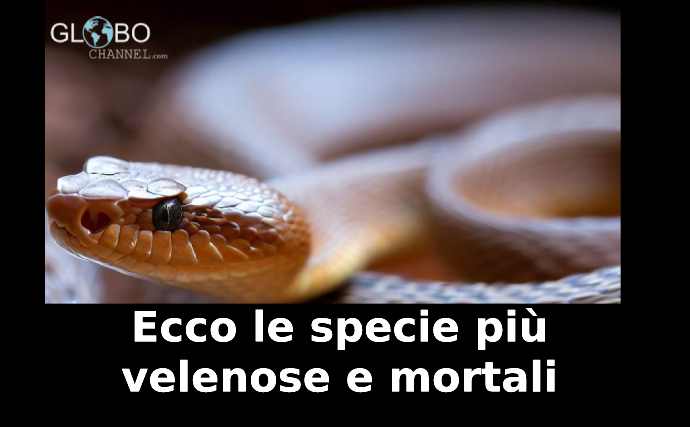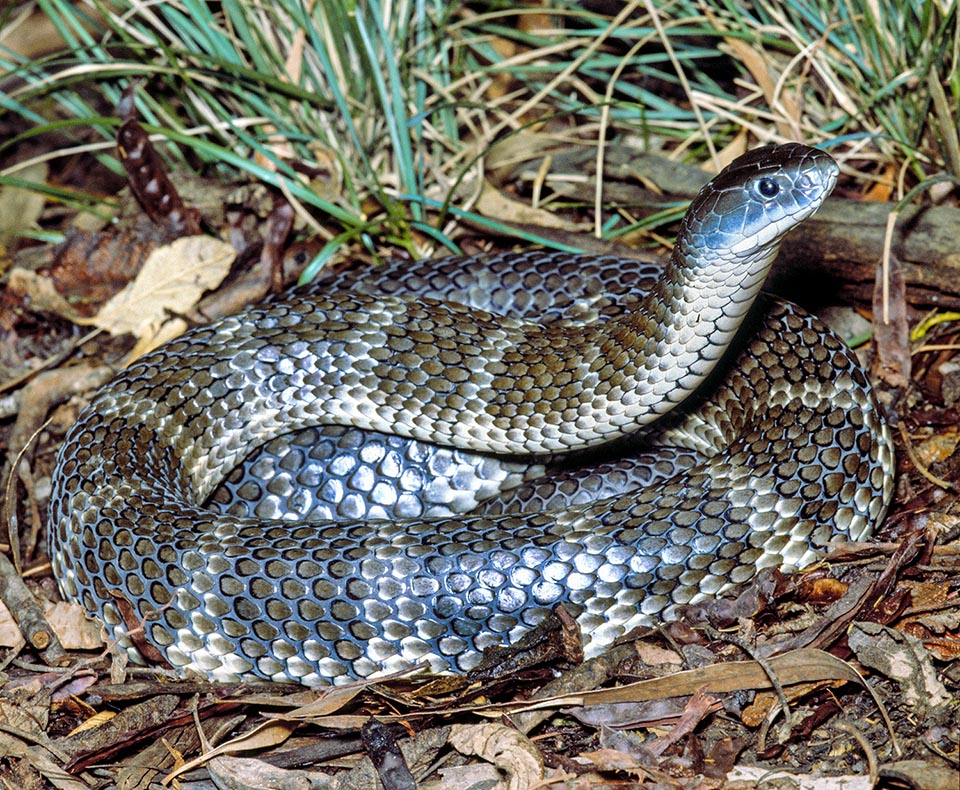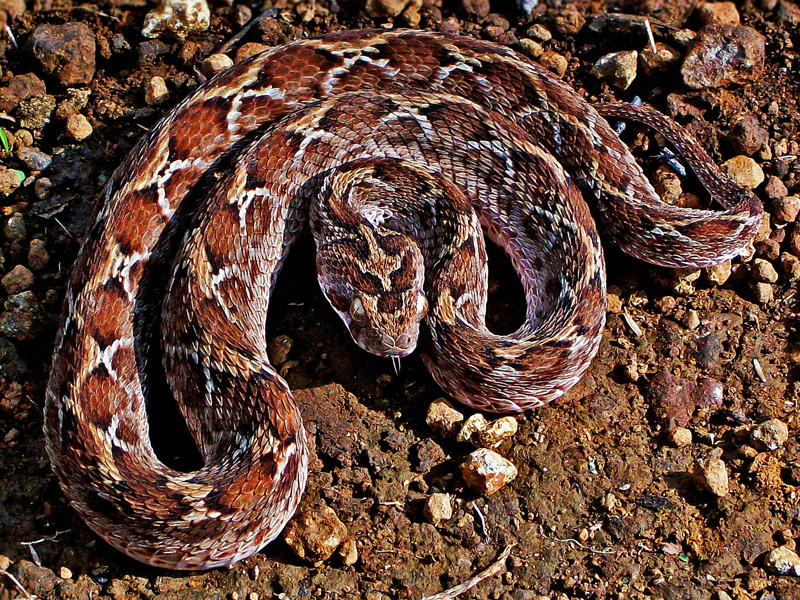 Of the over 3,000 species of snakes that slither around the world , only a few of them are venomous and only a few of these venomous species can prove to be truly deadly to humans . So in most cases, if you come face to face with a snake, have no fear:
Of the over 3,000 species of snakes that slither around the world , only a few of them are venomous and only a few of these venomous species can prove to be truly deadly to humans . So in most cases, if you come face to face with a snake, have no fear:
the important thing is to avoid contact and let them go their own way. Of these species, about 600 are venomous, with about 7% venomous enough to kill or seriously injure a human. Deadly venomous snakes include rattlesnakes, copperheads, water moccasins and coral snakes, all of which you can encounter in the United States , recalls the Centers for Disease Control and Prevention . But what about the rest of the world? Snakes can be found on almost every continent except Antarctica. So, here are the most venomous snake species in the world:
What are the most venomous snakes in the world?
According to the Australian Venom Research Unit at the University of Melbourne, Australia , these below top five venomous land snakes in the world, as of 2015:
- 1 – Inland taipan ( Oxyuranus microlepidotus )

The inland or western taipan, Oxyuranus microlepidotus , is the world’s most venomous snake , also according to the Encyclopedia Britannica . Native to Australia, this snake has the deadliest venom based on the median lethal dose, or LD50 , tested in mice. According to experts, LD50 defines ” the amount of a toxic agent (such as a poison, virus or radiation) that is sufficient to kill 50% of an animal population usually within a certain time “. Inland taipan venom also contains a ” spread factor. ““, or hyaluronidase enzyme, which increases the permeability of toxins throughout the body of the bitten person. Although its venom is dangerous, the inland taipan is ” relatively placid and shy and rarely encountered in its remote, semi-arid homeland “, says the Australian Museum. Interaction between this species and humans does not occur frequently. The venom from a single bite of the inland taipan is likely to be potent enough to kill about 250,000 rats, the equivalent of 100 men or 2 male elephants. This species generally lives in sparsely populated areas. Like many snakes, inland taipans are generally shy and usually won’t bite unless threatened or in the breeding season, when they can become very aggressive. No fatalities have been attributed to this species, and all known bites have been from people keeping them in captivity or actively foraging for them in the open.
- 2 – Brown snake orientale ( Pseudonaja_textilis )

This snake is considered the second most venomous snake on earth based on the hypodermic LD50 value measured in mice. [2]Due to its presence in the suburbs it is the snake responsible for the highest number of deaths in Australia. In adults the coloration is highly variable. While it is usually a solid shade of brown, it can have several variations including mottled and banded, ranging from a very light fawn to black, including orange, silver, yellow and grey. Juveniles may be banded and have a black head, with a lighter band on the shoulders, a black nape, and numerous red-brown spots on the belly. This species has an average length of 1.5-1.8m and rarely exceeds 2m. These snakes are often confused with the king brown snake ( Pseudechis australis ), sharing the same habitats with it in many areas.
- 3 – Coastal taipan ( Oxyuranus scutellatus )

Also known as the coastal taipan or common taipan , it is a venomous snake of the Oxyuranus family found in northern and eastern Australia and Papua New Guinea . Common taipan venom is injected from their long (12 mm) strong fangs . The injected venom is very potent (the common taipan is in third place in the rankings for venom potency, behind the inland taipan ( Oxyuranus microlepidotus ), which holds the first place, and the eastern brown snake ( Pseudonaja textilis )) in fact it contains a mix of neurotoxins and ed enzymes that destroy tissue and paralyze the nervous system . The common taipan also repeatedly bites its target, so the amount of venom injected is very high.
- 4 – Tiger snake ( Notechis scutatus )

The tiger snake is a venomous snake in the family Elapidae , endemic to Australia . It is the only species in the genus Notechis . [2] The Australian tiger snake is not very aggressive and lives close to human civilization, in fact, it does not tend to attack humans if it is not really threatened. When it feels in danger it raises its head in a typical preliminary position of attack and hisses. He is known for his attack feints and strikes with unerring accuracy. The tiger snake uses venom to kill its prey, but it is also possible that it uses constriction. Notechis scutatus it is one of the most venomous snakes in the world. Its venom is neurotoxic , coagulant , and cytotoxic . Local symptoms can be pain and swelling, but progressively various muscles undergo paralysis leading to possible thrombosis . Even the respiratory muscles can become paralyzed and then lead to asphyxiation . The risk of mortality in case of lack of treatment is between 40 and 50%. [4] [5] [6] The most effective treatment is to administer the serum against the venom of the tiger snake. It is possible to use the polyvalent serum which is general for elapids, but often a larger dosage is required and may cause reactions anaphylactic . So if it is possible to find traces of venom on the wound, the responsible species can be identified and the monovalent antidote can be used with a more efficient result. [6] [7]
- 5- Black tiger snake ( Notechis ater )

Related to the previous one, it owes its name to its particularly dark colour. This snake is also among the most venomous in the world.
What is the deadliest snake?

The bill adder , Echis carinatus , is considered the deadliest snake in the world, according to Britannica. Some experts have confirmed that this species is responsible for ” more human deaths than all other snake species combined” . The venom of the scaled viper is not as lethal as that of the first mentioned snakes, but the species is much more aggressive than others. These snakes are quick to strike and bite early and often when attacking. This reptileit measures up to 90 cm, although it normally measures from 40 to 80 cm. The basic color of the body can vary, as it can be gray, brown, greenish or beige, and is “decorated” by a variable design that helps camouflage the snake (because of these patterns it is also called carpet viper). The head is small but broad, and in some individuals there is a complex pattern on the crest. The tongue is forked and allows the viper to perceive the smells, which are then transferred to the Jacobson’s organ , on the palate . The fangs are long and curved and by piercing the victim’s skin they inject venom. They are retractable; when the snake does not need to use them they are drawn back against the palate. It has five layers of thick scales on its sides, which produce a typical screeching sound when the snake moves or feels threatened. Due to this characteristic, in India this snake is known as “phoorsa”, an onomatopoeic name which refers to the sound produced by the scales when the viper rubs the coils. Sawscale vipers are found throughout Africa and southwestern Asia to India and Sri Lanka, particularly in arid, dry areas. Adult pit vipers of this species can reach 1 to 3 feet in length, says Britannica .
#snakes #poisonous snakes #danger











